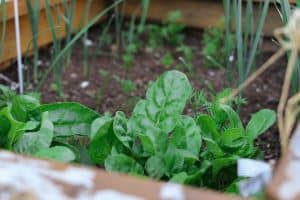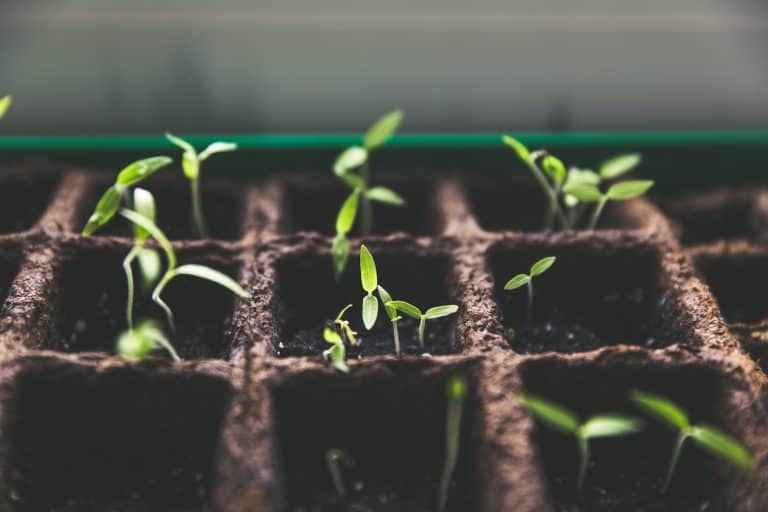A small vegetable garden is an excellent way to enjoy fresh, delicious produce all season long. With a little planning and creativity, you can create a beautiful and functional garden that fits into a small space. In this article, we will discuss the basics of small vegetable garden layout, along with some tips and tricks to get the most out of your limited space. 
Planning Your Small Vegetable Garden Layout
Before you begin planting, it’s essential to plan your small vegetable garden layout and get together your vegetable garden ideas. This will help you maximize the use of space and ensure that your own vegetable garden receive the necessary sunlight, water, and nutrients. Here are some steps to follow when planning your garden layout:
1. Measure your space: Measure the area you have available to determine how much space you have to work with. This will help you decide which vegetable gardens or if you need vertical garden and how many you can accommodate.
2. Choose your plants: Based on your available space, select plants that you enjoy eating and that grow well in your region. Some plants, such as root vegetables, vegetable crops, leafy greens, tomatoes, peppers, and eggplants, require more space, while others, like lettuce, radishes, and carrots, can be grown in smaller areas.
3. Determine the number of plants: Once you’ve selected your plants, decide how many you can fit into your garden. Consider the mature size of the plants and the space they require to grow properly. This will help you avoid overcrowding and promote healthy plant growth.
4. Map out your backyard vegetable garden ideas: Sketch out a rough plan of your container garden, indicating where each plant will be grown. This will help you visualize your garden layout and ensure that you have enough space for all your plants.
5. Plan for companion planting: Companion planting is the practice to grow vegetables in particular together to promote their growth and health. When planning your garden layout, consider which plants grow well together and which should be kept apart. This will help you create a more harmonious and productive garden.
Creating Your Small Vegetable Garden Layout
Once you have planned your garden layout, it’s time to start preparing the space and planting your vegetables. Here are some tips for creating a functional and attractive small vegetable garden:
1. Prepare the soil: Before planting, it’s essential to prepare the soil in your garden. This may involve removing any weeds, rocks, or debris and adding necessary nutrients and organic matter. Healthy soil will promote strong plant growth and help your vegetables thrive.
2. Choose a planting method: There are several different planting methods you can use in a small vegetable garden, including raised beds, container gardening, and in-ground planting. Each method has its benefits and drawbacks, so choose the one that works best for your space and needs. Raised beds, for example, can help improve soil drainage and make it easier to manage weeds, while container gardening allows you to move plants around to optimize sunlight exposure.
3. Plant your vegetables: Following your garden plan, plant your vegetables in the appropriate locations. Be sure to space your plants properly to avoid overcrowding and ensure they have enough room to grow.
4. Add support structures: Some plants, such as tomatoes, peppers, and beans, require support structures to help them grow upright and prevent damage. Be sure to install these structures when you plant your vegetables to provide the necessary support from the start.
5. Mulch your garden: Applying a layer of mulch around your plants can help conserve moisture, suppress weeds, and maintain a consistent soil temperature. This can be especially helpful in a small vegetable garden, where space is limited and plants are more susceptible to competition from weeds.
6. Water and fertilize regularly: To keep your small vegetable garden healthy and productive, be sure to water and fertilize your plants regularly. This will ensure they have the necessary nutrients to grow strong and produce a bountiful harvest.
Maximizing Space in Your Small Vegetable Garden
In a small vegetable garden, space is at a premium. Here are some tips for maximizing your available space and getting the most out of your garden:
1. Vertical gardening: Make use of vertical space by growing plants that climb or trail, such as beans, peas, and cucumbers, on trellises , fences, or other support structures. This can help increase your garden’s productivity without taking up valuable ground space.
2. Succession planting: To make the most of your limited space, plant crops in succession, meaning you plant a new crop as soon as the previous one has been harvested. This allows you to grow multiple crops in the same space throughout the growing season and ensures a continuous supply of fresh produce.
3. Interplanting: This technique involves planting crops with different growth rates and sizes together in the same space, allowing you to maximize the use of available space. For example, you can plant fast-growing, small plants like radishes or lettuce among slower-growing, larger plants like tomatoes or peppers.
4. Square foot gardening: This method divides the garden into small, one-square-foot sections, allowing you to grow a variety of plants in a compact area. By carefully planning your garden layout and selecting plants that grow well together, you can create a highly productive and efficient garden in a small space.
5. Choose compact varieties: Many vegetable plants have compact or dwarf varieties that have been bred specifically for small spaces. These plants typically have a smaller mature size, making them ideal for a small vegetable garden layout.
6. Prune and train plants: Regular pruning and training of your vegetable plants can help keep them compact and encourage more productive growth. For example, pruning tomato plants by removing excess foliage and suckers can help direct the plant’s energy into producing fruit rather than excessive foliage.
Small Vegetable Garden Layout – Final Thoughts
Creating a small vegetable garden layout requires careful planning and a bit of creativity. By making the most of your available space and implementing some clever gardening techniques, you can enjoy a bountiful harvest from your compact garden. Remember to plan your garden layout, choose suitable plants, and regularly care for your garden to ensure its success. With a bit of effort and dedication, you can transform even the smallest of spaces into a flourishing and productive vegetable garden.


